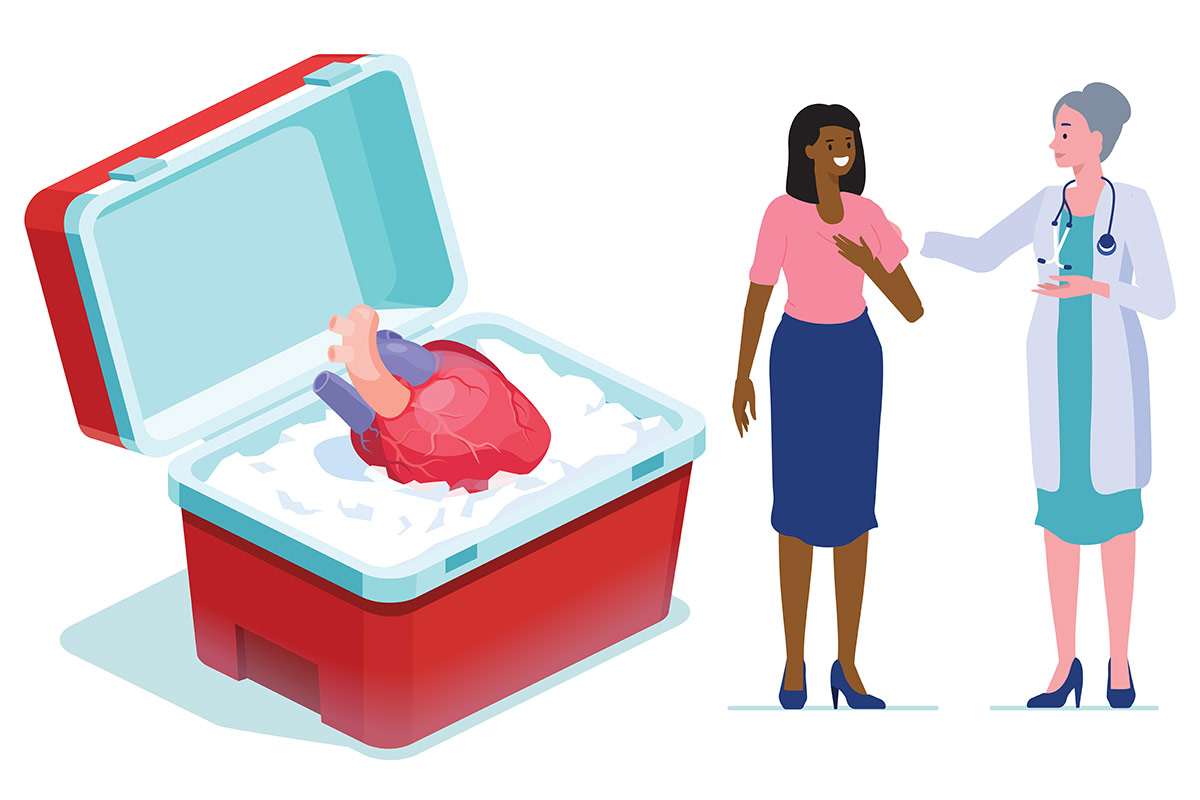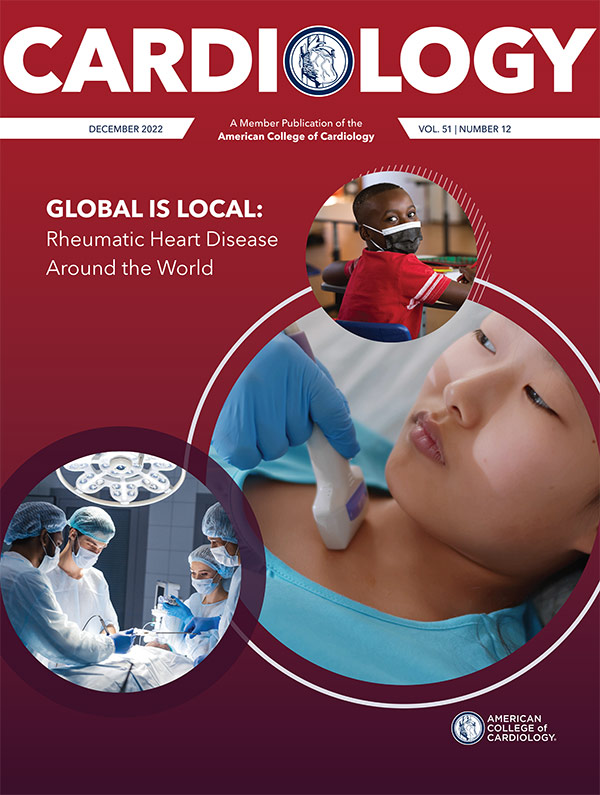Focus on Heart Failure | Moving Away From Biopsies: The Science and the Patient Experience Post Heart Transplantation

Heart transplantation remains the gold standard therapy for end-stage heart failure. Median survival after heart transplant among those who survive the first year is 15 years. Over the last few years, we have continued to expand the donor pool through changes in donor selection, such as using organs from donors positive for Hepatitis C and donation after circulatory death, as well as improving methods of organ preservation and experimenting with xenotransplantation.1
Yet, primary concerns for our heart transplant recipients remain the balance between rejection of the allograft as well as short- and long-term complications of chronic immunosuppression including infection and rejection. The majority of episodes of rejection occur within the first year after transplantation, particularly within the first six months.2
The first endomyocardial biopsy was performed in 1962 in Japan.3 It has a wide variety of uses including diagnosis of infiltrative cardiomyopathies, drug toxicities, myocarditis, and, perhaps most relevant, for the detection of allograft rejection after heart transplantation.3 Since that time, it has evolved as the gold standard for surveillance of rejection. However, endomyocardial biopsies have their limitations, including cost and overall resource utilization, procedural complications, sampling errors and interobserver variability, which could lead to differences in interpretation by different pathologists.2,4
Additionally, although the risks associated with any single endomyocardial biopsy are low, among recipients who underwent repeated endomyocardial biopsies, many could develop tricuspid valve regurgitation as a result of multiple crossings of the valve with the bioptome.5 If the valvular structure was disrupted, significant regurgitation over time could lead to progressive right heart dysfunction.5 Symptomatic regurgitation was reported in up to 23% of patients in some studies.6
Noninvasive Monitoring of Rejection
The ACC's Heart House Roundtable, Recent Advances and Ongoing Challenges in Heart Failure with Preserved Ejection Fraction (HFpEF) identified 11 key opportunities when it comes to caring for patients with HFpEF. Visit ACC.org/RoundtablesTakeaways to read and download the key takeaways document.
Designed to explore practical issues that clinicians and patients face every day, ACC's Roundtables address high-value topics by convening nationally recognized experts representing a wide variety of professional societies and other key stakeholders, including patients, federal agencies, health plans and integrated health systems, in interactive and facilitated in-depth discussions to brainstorm solutions.
More recently, noninvasive methods including gene expression profiling (GEP) and donor-derived cell-free DNA (dd-cfDNA) have been used for rejection surveillance. GEP is a biomarker of immune system activation and notably may be falsely elevated during systemic inflammation. Cell-free DNA has been used previously as part of prenatal testing and in the setting of oncology.7,8 In the case of transplant recipients, methods have been developed that can detect levels of dd-cfDNA where elevated levels can suggest allograft injury, most concerningly acute rejection.9
These blood tests have been shown to help detect rejection and may perhaps allow for earlier detection than endomyocardial biopsy-based surveillance strategies.10-12 In the Donor-Derived Cell-Free DNA-Outcomes AlloMap Registry (D-OAR) study, dd-cfDNA had a 97% negative predictive value for acute rejection. D-OAR also showed that increased dd-cfDNA levels correlated with rejection detected on traditional biopsy.11
At many centers, the number of protocol biopsies in the first few months to one year post transplant have been reduced dramatically. HeartCare (CareDx, Inc.), which includes the GEP AlloMap assay as well as the dd-cfDNA AlloSure assay, is currently approved for use at least 55 days post transplant. This was also expedited by the COVID-19 pandemic, during which time various centers used these tests to minimize patient exposure to the health care system when elective procedures were also being delayed.13 Certain companies facilitate remote phlebotomy in the comfort of a patient's home.
I am so excited that there is a new way to test rejection! [Before a biopsy] I was terrified and started weeping and shaking…The tiny needle prick to extract DNA info was amazing!!! I am so grateful.
– Study Participant
Improved patient satisfaction, related to the reduced need for endomyocardial biopsies, also has been shown in some small studies.
In one such study, GEP testing as compared with endomyocardial biopsy was associated with fewer adverse events and lower pain scores.14 Measures of anxiety did not differ which may have been due to the small sample size. In another single-center experience of combined GEP and dd-cfDNA testing, patient-reported satisfaction was 90%. They experienced less pain and lower anxiety levels. One patient was quoted as saying, "I am so excited that there is a new way to test rejection! [Before a biopsy] I was terrified and started weeping and shaking…The tiny needle prick to extract DNA info was amazing!!! I am so grateful."13 Additionally, the testing facilitated a reduction in immunosuppression. These studies, although small, are equally as important as the science and remind us of the importance of the patient experience.
Notably, these tests have not been well studied in dual-organ transplant recipients where an elevated dd-cfDNA does not indicate which allograft may be at risk for rejection. Additionally, the trials and registries to date have largely enrolled patients of low immunologic risk. Implementation of noninvasive surveillance methods for rejection may vary based on the center's level of experience and comfort.
Innovation Needed to Address Remaining Challenges
Click here to read an update on cardiac transplantation from the July issue of Cardiology.
This is an exciting time in the field of heart transplantation, recognizing that we still face challenges for our patients. Many of the core pharmacologic agents of our immunosuppression regimens are the same as they have been for the last 20 years. The toxicities associated with these regimens, including development of renal dysfunction and malignancy, unfortunately persist.15
Additionally, cardiac allograft vasculopathy remains the Achilles' heel of cardiac transplantation as we try to improve allograft longevity and, with it, our patients' quality of life. This calls for continued innovation in the area of novel immunotherapies as well as a focus on improving long-term outcomes. These outcomes do not encompass just survival – but should also include survival free of renal failure or needing dialysis or developing a malignancy – and incorporate patient-reported outcomes and quality-of-life metrics specific to the transplant recipient.

This article was authored by Ersilia M. DeFilippis, MD, FACC, an assistant professor of medicine, Division of Cardiology, Center for Advanced Cardiac Care, at Columbia University Irving Medical Center-New York Presbyterian Hospital.
References
- DeFilippis EM, Khush KK, Farr MA, et al. Evolving characteristics of heart transplantation donors and recipients: JACC Focus Seminar. J Am Coll Cardiol 2022;79:1108-23.
- Oh KT, Mustehsan MH, Goldstein DJ, et al. Protocol endomyocardial biopsy beyond 6 months - it is time to move on. Am J Transplant 2021;21:825-9.
- Cunningham KS, Veinot JP, Butany J. An approach to endomyocardial biopsy interpretation. J Clin Pathol 2006;59:121-9.
- Coutance G, Kransdorf E, Aubert O, et al. Clinical Prediction model for antibody-mediated rejection: A strategy to minimize surveillance endomyocardial biopsies after heart transplantation. Circ Heart Fail 2022;15:e009923.
- Wong RC-C, Abrahams Z, Hanna M, et al. Tricuspid regurgitation after cardiac transplantation: An old problem revisited. J Heart Lung Transplant 2008;27:247-52.
- From AM, Maleszewski JJ, Rihal CS. Current Status of endomyocardial biopsy. Mayo Clin Proc 2011;86:1095-1102.
- Chiu RWK, Lo YMD. Noninvasive prenatal diagnosis by analysis of fetal DNA in maternal plasma. Methods Mol Biol 2006;336:101-9.
- Muluhngwi P, Valdes R, Fernandez-Botran R, et al. Cell-free DNA diagnostics: Current and emerging applications in oncology. Pharmacogenomics 2019;20:357-80.
- Khush KK. Clinical utility of donor-derived cell-free DNA testing in cardiac transplantation. J Heart Lung Transplant 2021;40:397-404.
- Agbor-Enoh S, Shah P, Tunc I, et al. Cell-free DNA to detect heart allograft acute rejection. Circulation 2021;143:1184–97.
- Khush KK, Patel J, Pinney S, et al. Noninvasive detection of graft injury after heart transplant using donor-derived cell-free DNA: A prospective multicenter study. Am J Transplant 2019;19:2889-99.
- Crespo-Leiro MG, Stypmann J, Schulz U, et al. Clinical usefulness of gene-expression profile to rule out acute rejection after heart transplantation: CARGO II. Eur Heart J 2016;37:2591-2601.
- Amadio JM, Rodenas-Alesina E, Superina S, et al. Sparing the prod: Providing an alternative to endomyocardial biopsies with noninvasive surveillance after heart transplantation during COVID-19. CJC Open 2022;4:479-87.
- Jamil AK, Tecson K, Ganz TT, et al. AlloMap versus endomyocardial biopsy: The patient experience. J Heart Lung Transplant 2021;40:S290.
- Crespo-Leiro MG, Costanzo MR, Gustafsson F, et al. Heart transplantation: focus on donor recovery strategies, left ventricular assist devices, and novel therapies. Eur Heart J 2022;43:2237-46.
Clinical Topics: Heart Failure and Cardiomyopathies, Noninvasive Imaging, Prevention, Valvular Heart Disease, Acute Heart Failure
Keywords: ACC Publications, Cardiology Magazine, Heart Failure, Secondary Prevention, Heart Valve Diseases, Diagnostic Imaging
< Back to Listings

